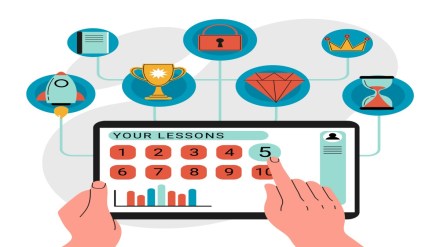By Hormazd Mistry
The landscape of learning and development (L&D) is evolving rapidly. Traditional approaches to education and training are being complemented and replaced by innovative technological solutions. As organisations strive to stay competitive and adapt to the demands of the digital age, leveraging technology in L&D has become not just a trend but a necessity.
Personalised learning paths
One of the significant advantages of technology in L&D is the ability to tailor learning experiences to individual needs. Advanced learning management systems (LMS) and adaptive learning platforms use algorithms and data analytics to assess strengths, weaknesses, and learning styles. This data-driven approach enables the creation of personalised learning paths, ensuring that employees receive content that is relevant, engaging, and targeted to their specific developmental needs.
Amazon Web Services (AWS) utilises personalised learning paths in training and certification programs. The AWS Training and Certification platform assesses individual skills, experiences, and career goals, providing learners with a personal roadmap. It ensures that professionals, from beginners to advanced users, receive targeted training aligned with their specific needs in cloud computing. Personalization fosters a more efficient learning process, as individuals can focus on areas where improvement is needed, ultimately leading to better retention and application of knowledge.
Gamification for engagement
Gamification is a powerful tool that brings fun and competition to learning. By incorporating game-like features such as badges, points, and leaderboards, organisations can increase engagement and motivation among learners. Deloitte’s leadership academy embraces gamification to enhance engagement. The “Deloitte Leadership Academy” uses gamified elements such as badges, leaderboards, and simulations. Gamified learning modules make the educational experience more interactive and enjoyable, encouraging employees to participate in their development. This approach helps cultivate a continuous learning culture within the organisation, as employees get incentives to explore new skills and competencies in a gamified environment.
Virtual Reality (VR) and Augmented Reality (AR)
Virtual Reality (VR) and Augmented Reality (AR) have revolutionised experiential learning. VR immerses learners in realistic, simulated environments, providing hands-on experience without real-world consequences. AR overlays digital information onto the real world, enhancing the learning environment. This technology is especially beneficial for industries where practical, on-the-job experience is crucial. Companies like Boeing use VR simulations for aircraft assembly, allowing trainees to practise complex procedures in a virtual environment. This hands-on experience enhances skills acquisition and reduces the learning curve when transitioning to real-world tasks.
Collaborative learning platforms
Technology facilitates collaborative learning by breaking down geographical barriers and fostering communication among learners. Collaborative learning platforms, such as online forums, video conferencing, and real-time document sharing, enable employees to engage in discussions, share insights, and collaborate on projects. These platforms encourage a sense of community and provide a valuable space for knowledge exchange. Slack, a popular collaboration platform, is widely used for communication and knowledge sharing. Teams can create channels dedicated to specific projects or topics, fostering real-time collaboration. The platform allows for the seamless exchange of information, making it an effective tool for collaborative learning in a virtual or distributed work environment. Whether employees work remotely or across different office locations, collaborative learning technologies ensure that the learning experience remains inclusive and interactive.
Microlearning for bite-sized knowledge
The modern workforce often faces time constraints, making lengthy training sessions impractical. Microlearning addresses this challenge by delivering content in small, easily digestible modules. These bite-sized lessons cater to the short attention spans of today’s learners, allowing them to consume information in quick sessions. Mobile learning apps and platforms specialising in microlearning make it easy for employees to access relevant content on the go. LinkedIn Learning employs microlearning with its “Learning Paths” feature. Professionals can access short, targeted courses on specific skills. For example, a marketing professional could take a microlearning course on social media analytics, allowing for focused skill development without extended time commitments. Similarly, organisations can foster continuous learning without overwhelming their workforce by breaking complex topics into manageable chunks.
Artificial Intelligence (AI) for intelligent insights
AI is transforming the L&D landscape by providing intelligent insights into learning patterns and performance. AI algorithms analyse data to identify trends, predict learner behaviour, and recommend personalised learning paths. Chatbots powered by AI can offer instant support to learners, answering queries and providing guidance. IBM’s Watson Talent Insights leverages AI to provide intelligent insights into workforce skills and development needs. The platform analyses data to identify skills gaps, recommend training programs, and predict future skill requirements. This AI-driven approach enables organisations to align learning initiatives with strategic business goals. AI-driven analytics also assist L&D professionals in assessing the effectiveness of training programs, allowing for data-driven decision-making and continuous improvement.
Embracing technology in learning and development does not merely mean incorporating the latest trends; it is about strategically leveraging tools to enhance the learning experience. As technology advances, staying attuned to these innovations is essential for organisations seeking to foster a culture of continuous learning and development in the digital age.
The author is the CEO ROI Institute of India.
